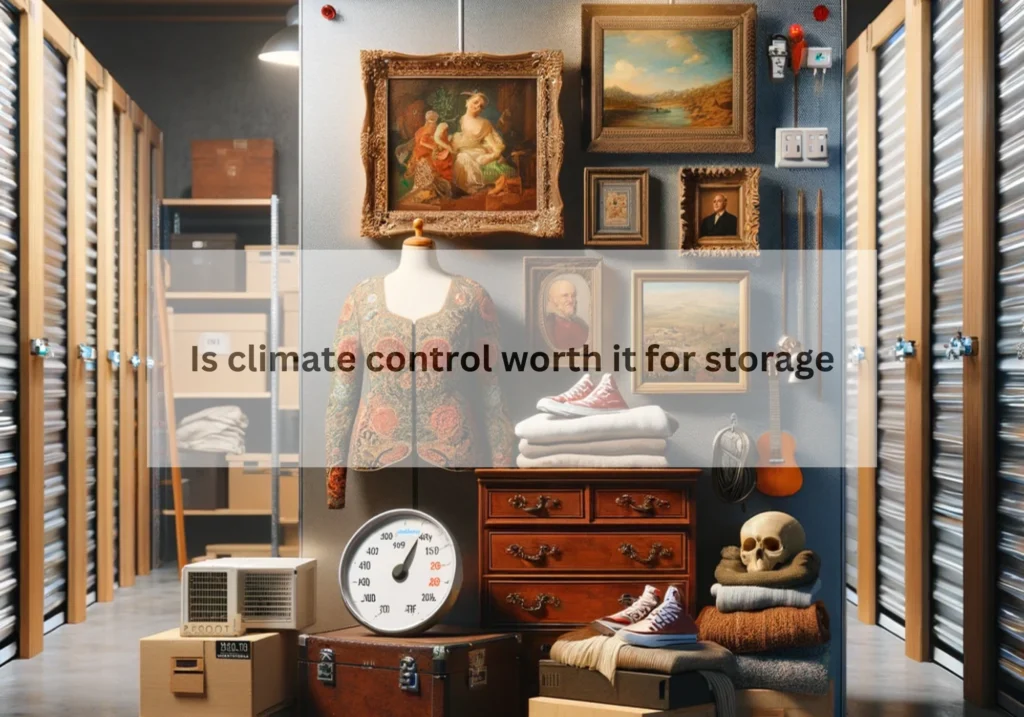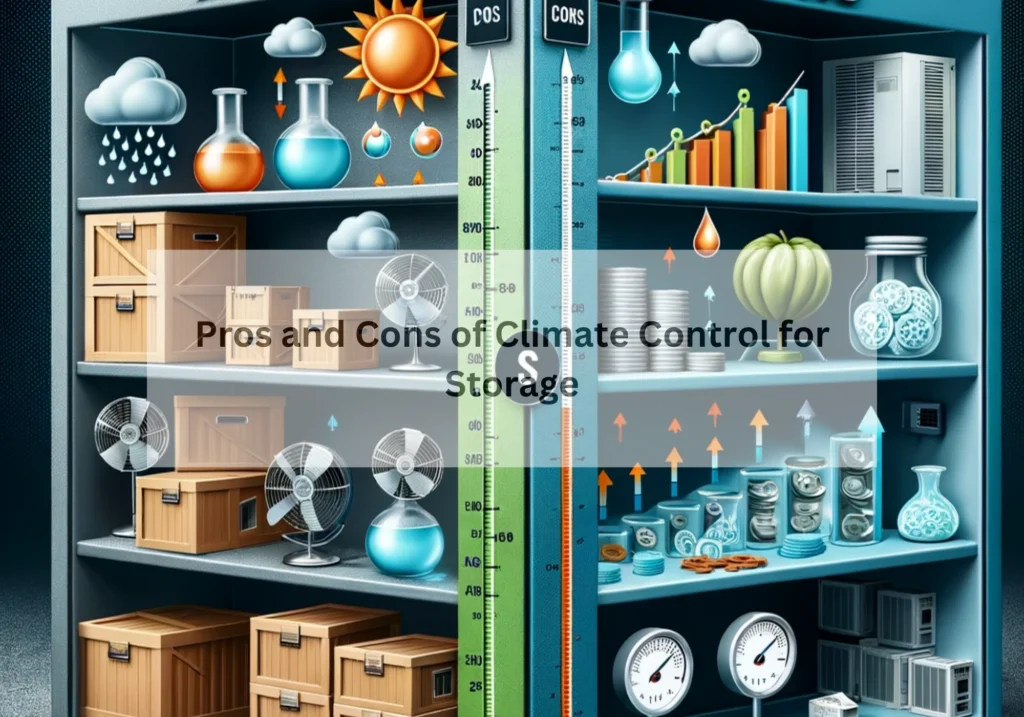
In contemplating the worth of climate control for storage, it boils down to a careful examination of factors that contribute to its efficacy. Let’s succinctly explore the considerations that make climate control a potentially invaluable investment for storage spaces.
Recognition of the vital role optimal storage conditions play in ensuring the longevity of possessions sets the stage for evaluating the importance of climate control.
The Crux of Climate Control

In the storage realm, often underestimated is the impact of environmental conditions on possessions. A meticulous approach to storage conditions, anchored by climate control systems, is the linchpin for preserving items over time. Let’s explore the nuances of climate control and its profound impact on stored items.
Decoding Climate Control

At its core, climate control is a sophisticated system designed to curate atmospheric conditions within storage spaces. It surpasses basic temperature regulation, intricately managing humidity levels crucial for preserving the longevity of stored possessions.
Unveiling Intricacies

Now, let’s dissect the layers of climate control, understanding its role in temperature regulation and humidity management for diverse items.
Temperature Calibration
Climate control involves nuanced temperature regulation, ensuring an optimal range for diverse items—electronics, fabrics, and more—to enhance their longevity.
Humidity Equilibrium
Managing humidity delicately, climate control acts as a silent guardian, preventing potential damage caused by excess moisture or aridity.
Exploring Costs: Cost To Build A Climate-Controlled Storage
Delving into practicalities, this section addresses the financial implications of building a climate-controlled storage space. It explores upfront expenses, operational costs, and the long-term value proposition.
In the intricate dance between precision and preservation, climate control emerges not just as a system but as an ethos—a commitment to the enduring care of belongings. The journey into climate-controlled storage safeguards possessions against the erosive forces of time.
Impact on Stored Items

Consider the electronic devices and appliances that populate our homes. They are not impervious to the whims of temperature and humidity. Sensitivity to these environmental factors can result in diminished performance and a shortened lifespan. Climate control emerges as a sentinel, preserving the delicate internal components and ensuring optimal functionality over the long term.
Wooden items, often the silent victims of neglect, are susceptible to warping, cracking, and the insidious infiltration of mold. Climate control acts as a vigilant guardian, maintaining a stable environment that thwarts these deleterious effects and fortifies the structural integrity of furniture.
Clothing and textiles, repositories of our personal narratives, are equally vulnerable. Humidity, in particular, can lead to the insidious invasion of mildew, compromising the very fabric that weaves our stories. Delicate fabrics demand a nuanced approach to temperature control, a facet that climate control systems adeptly address.
Pros and Cons of Climate Control for Storage

Advantages
The benefits of investing in climate control are multifold. Not only does it extend the lifespan of stored items, preserving their inherent value, but it also shields them against the creeping menace of pest infestations. The value proposition becomes evident when considering the potential financial losses and sentimental devaluation that can result from neglecting climate control.
Drawbacks
However, the utopian promise of climate control does come with its caveats. Cost considerations, both in terms of installation and ongoing operational expenses, necessitate a thoughtful evaluation. Additionally, the environmental impact of sustaining these systems poses ethical questions that merit consideration.
DIY vs. Professional Climate Control Solutions

DIY Strategies
For those on a budget, a DIY approach to climate control may seem appealing. Tips for insulation, ventilation, and basic humidity management can offer some level of protection. Yet, the limitations of amateur solutions, coupled with potential risks, underline the necessity of a discerning approach.
Professional Climate Control Services
On the flip side, professional climate control services offer a tailored, comprehensive solution. Specialized systems not only guarantee optimal conditions but also prove cost-effective in the long run. The expertise of professionals ensures a nuanced understanding of diverse storage needs, providing a level of security beyond the reach of makeshift solutions.
Tips for Implementing Climate Control in Storage

Optimal Temperature and Humidity Levels
Tailoring climate control settings to the specific requirements of stored items is paramount. Different materials demand distinct conditions, and a well-informed approach ensures a harmonious coexistence between possessions and their environment.
Monitoring Systems
Real-time monitoring emerges as the linchpin of an effective climate control strategy. Leveraging available technology for efficient tracking enables proactive adjustments, averting potential disasters and fostering a seamless symbiosis between storage conditions and item preservation.

Cycling training tips and camps with Joel Chavez, Pan-American Gold Medalist has been writing about savings and finance since 2016 and analyzes thousands of products to find you the best deal. He will help you save money while you shop. They cover huge products including home, garden, car, business, tech, and many more for making the best financial decision.
